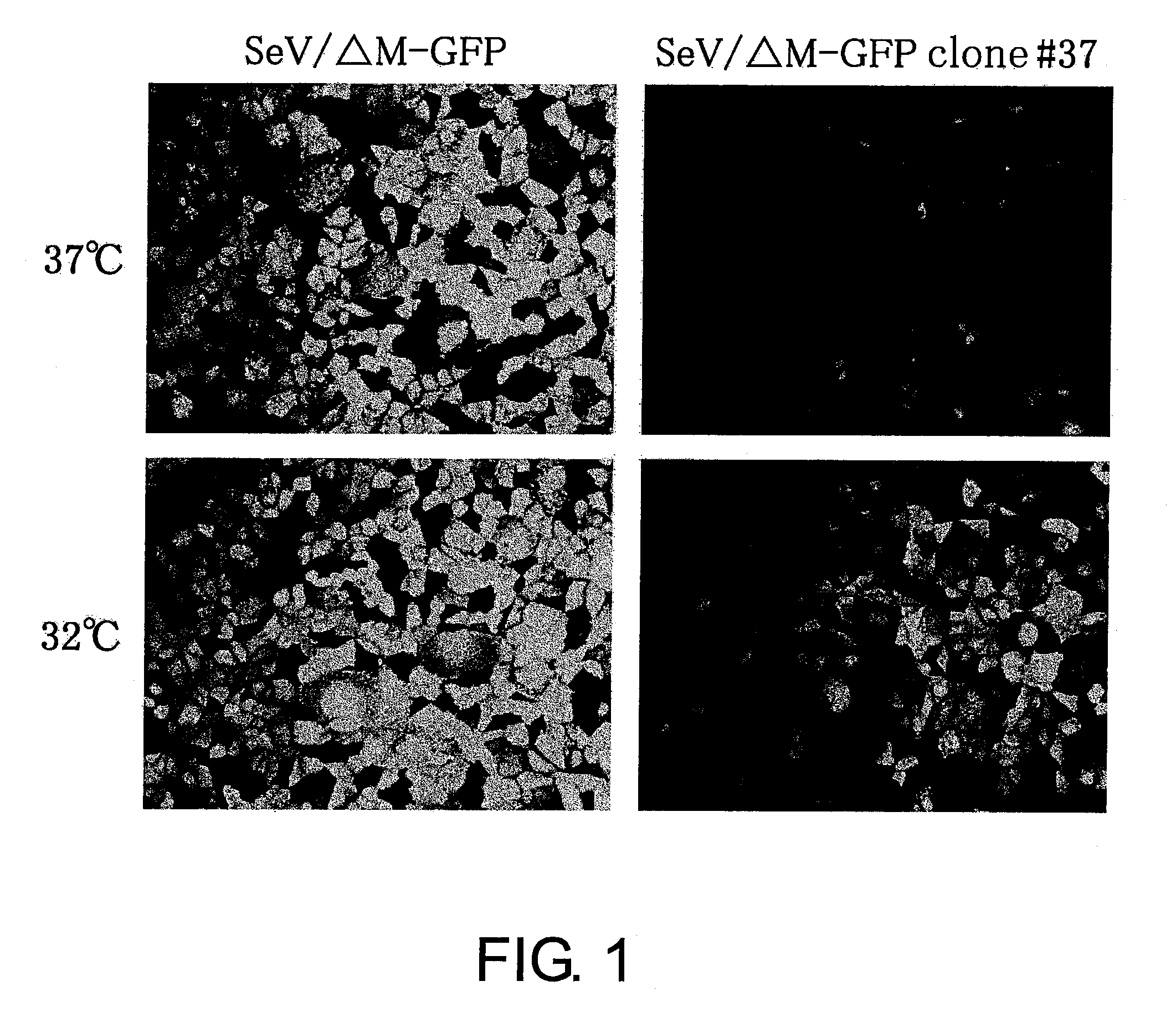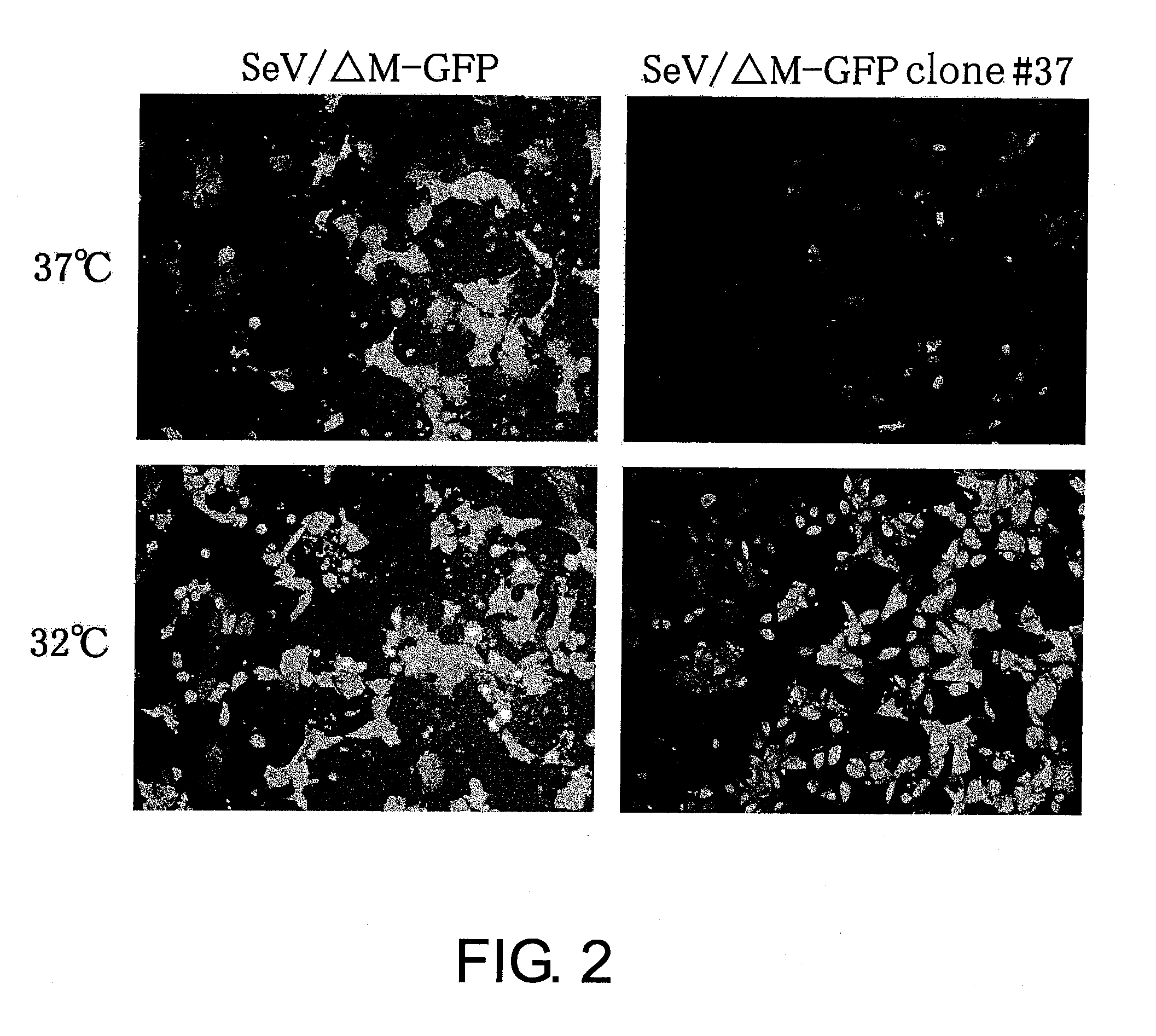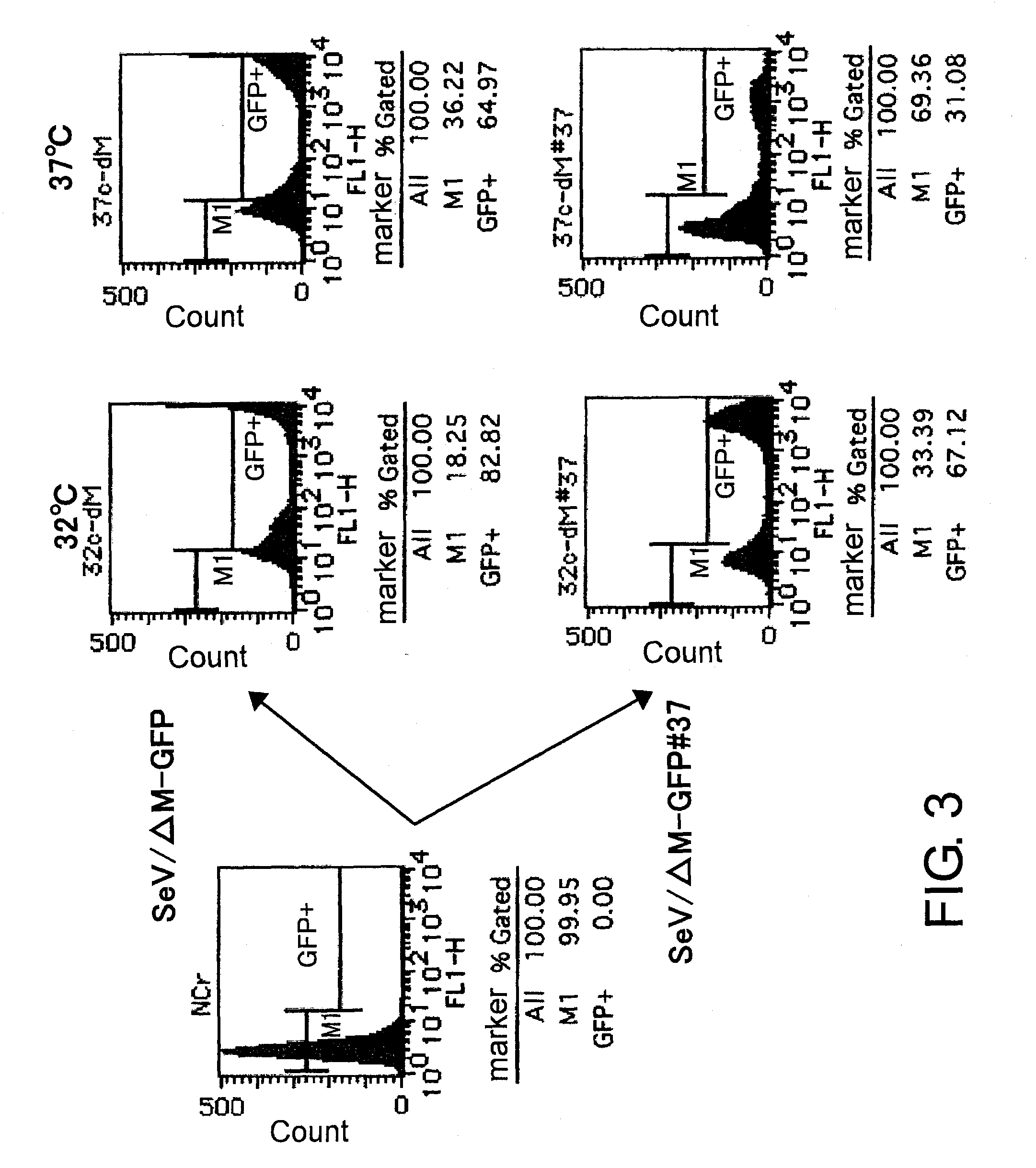Attenuated minus-stranded RNA virus
- Summary
- Abstract
- Description
- Claims
- Application Information
AI Technical Summary
Benefits of technology
Problems solved by technology
Method used
Image
Examples
example 1
Genes
1-1. Sendai Virus
[0136]Sendai virus used was Z strain (15 kb). Some genes were deleted or amino acid mutations were inserted.
1-2. Reporter Genes
[0137]EGFP: a green fluorescent protein with an altered nucleotide sequence derived from luminous Aequorea victoria; 720 b (Accession No. U57606) gene was inserted into the Sendai virus genome.
[0138]LacZ: β-galactosidase; 3.1 kb (Accession No. U13184) gene was inserted into the Sendai virus genome.
example 2
Cell Culture
2-1. Cell Lines
[0139]LLC-MK2: cell line derived from Rhesus monkey kidney
CV-1: cell line derived from African green monkey kidney
HEK 293: cell line derived from human fetal kidney
Mouse bone marrow mesenchymal cells: collected from the thigh of C57BL / 6 mice
2-2. Cell Culture
[0140]Cells of LLC-MK2 (ATCC CCL-7) and CV-1 (ATCC CCL-70) lines, which are monkey kidney-derived cell lines, were suspended in minimal essential medium (MEM) (Invitrogen-GIBCO, Cat. No. 11095-080) containing 10% fetal bovine serum (FBS; GIBCO-BRL, Cat. No. 10099-141), 100 μg / ml penicillin, and 100 units / ml streptomycin (Nacarai Tesque, Cat. No. 26253-84) and cultured under 5% carbon dioxide at 37° C. Cells of HEK 293 line (ATCC CRL-1573) were suspended in Dulbecco's Modified Eagle Medium (DMEM) (Invitrogen-GIBCO, Cat. No. 11995-065) containing 10% FBS, 100 μg / ml penicillin, and 100 units / ml streptomycin, and cultured under the same conditions as described above. Mouse bone marrow cells were collected f...
example 3
Preparation of Virus
3-1. Preparation of Sendai Virus Vector
[0141]F gene-deficient vector (SeV / ΔF) and M gene-deficient vector (SeV / ΔM) were harvested using the packaging cell lines: LLC-MK2 / F7 (cells expressing F protein) (Li, H. O., Zhu, Y. F., Asakawa, M., Kuma, H., Hirata, T., Ueda, Y, Lee, Y. S., Fukumura, M., Iida, A., Kato, A., et al. (2000), J Virol 74, p. 6564-6569) and LLC-MK2 / F7 / M62 (cells expressing M protein) (Inoue, M., Tokusumi, Y., Ban, H., Kanaya, T., Shirakura, M., Tokusumi, T., Hirata, T., Nagai, Y., Iida, A., and Hasegawa, M. (2003), J Virol 77, p. 6419-6429), respectively. The packaging cell lines stably supply the proteins whose encoding genes have been deleted from the vectors.
3-2. Preparation of Adenovirus Vector
[0142]The respective proteins whose encoding genes had been deleted were induced using adenovirus vector (AxCANCre) (Nakano, 2003, P147) that expressed Cre recombinase. LacZ-expressing type 5 adenovirus vector (AdenoCALacZ) was harvested using HEK 293 ...
PUM
 Login to View More
Login to View More Abstract
Description
Claims
Application Information
 Login to View More
Login to View More - R&D
- Intellectual Property
- Life Sciences
- Materials
- Tech Scout
- Unparalleled Data Quality
- Higher Quality Content
- 60% Fewer Hallucinations
Browse by: Latest US Patents, China's latest patents, Technical Efficacy Thesaurus, Application Domain, Technology Topic, Popular Technical Reports.
© 2025 PatSnap. All rights reserved.Legal|Privacy policy|Modern Slavery Act Transparency Statement|Sitemap|About US| Contact US: help@patsnap.com



